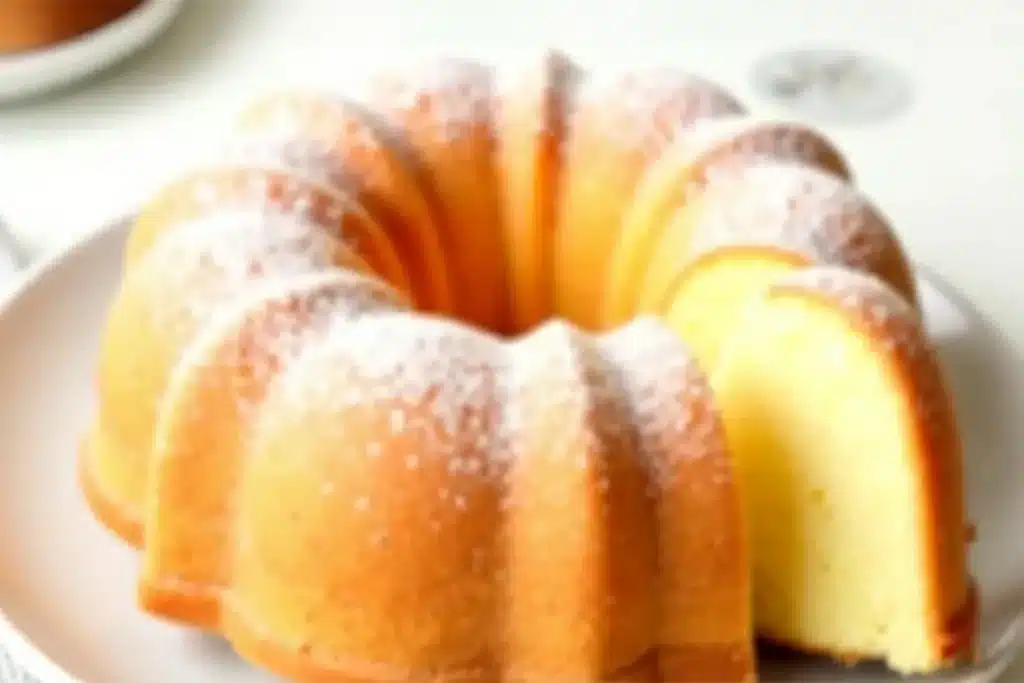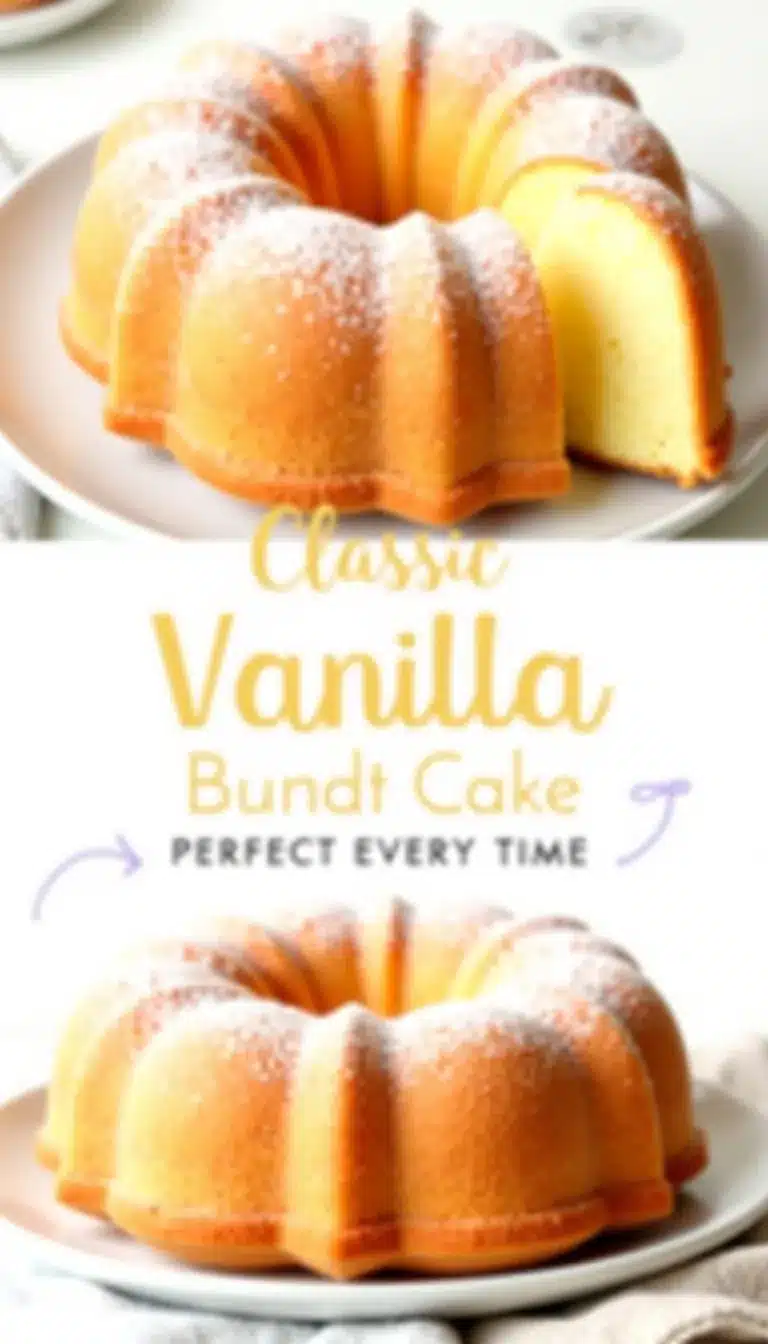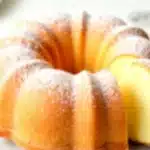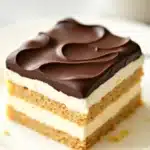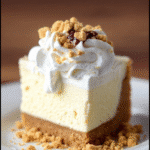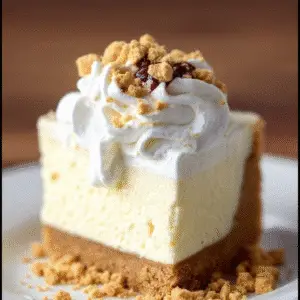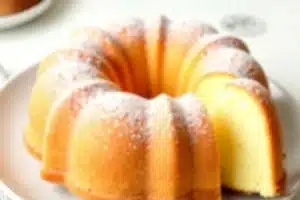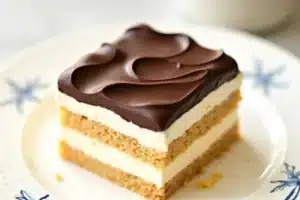Let’s be honest—nothing brings a kitchen to life like the sweet scent of a classic vanilla Bundt cake baking in the oven. This vanilla Bundt cake recipe is my go-to when I want something easy, moist, and downright perfect every time. I still remember the first time I pulled a Bundt cake from the oven; I felt like I’d just baked a masterpiece! There’s something timeless about that beautiful golden crust and the buttery crumb, just begging to be sliced and shared. Whether you’re looking for a show-stopping dessert for a party, a comforting treat for a rainy afternoon, or just want to fill your home with the irresistible aroma of vanilla, you’ve found the right recipe.
So, why make this vanilla Bundt cake? Well, it’s simple enough for beginners but impressive enough for celebrations. Plus, the vanilla flavor is warm and inviting—never boring. Did you know that Bundt cakes first became popular in the United States in the 1950s thanks to the distinctive pan design? There’s a reason this style of cake has stood the test of time. I’ve baked this cake for birthdays, brunches, and just about every family gathering. Each time, it vanishes in a flash, and I’m left with only a few crumbs and lots of happy faces. Stick around and I’ll share not only my favorite way to make it but all the little tricks that make this recipe come out perfect every single time.
Why You Will Love This Recipe
There’s a certain magic in a classic vanilla Bundt cake that goes beyond just taste. This recipe is rooted in American baking traditions, but its heart is shared with cake lovers everywhere. For me, it evokes memories of my grandmother’s kitchen, where Bundt cakes cooled on the counter and the air was always sweet with vanilla. She’d tell me stories about how Bundt pans became a staple after the 1960s Pillsbury Bake-Off, and suddenly every home baker wanted to try their hand at this beautiful ring-shaped cake.
The real beauty of this vanilla Bundt cake recipe is its versatility. Over the years, I’ve tweaked and tested this cake for everything from summer picnics to cozy winter holidays. In spring, I’ll swirl in a little lemon zest; in fall, maybe a hint of cinnamon or nutmeg. The cake’s buttery crumb and gentle vanilla flavor are the perfect backdrop for any seasonal twist. Plus, it’s the kind of cake you can dress up or down. A dusting of powdered sugar? Perfect for brunch. A rich vanilla glaze? That’s showstopper territory.
Honestly, what keeps me coming back to this recipe is how reliable it is. It never fails, no matter the weather or how distracted I get (and believe me, with kids running around, distractions happen). The cake always bakes up moist, with a golden crust and that signature Bundt shape. There’s something comforting about knowing you can rely on a recipe—especially when it’s tied to so many happy memories and a bit of baking history. No matter your experience level, this vanilla Bundt cake is bound to become a favorite in your kitchen too.
Ingredient Discussion
- All-purpose flour (3 cups / 375g): The backbone of the cake. For the fluffiest crumb, I always sift my flour first. If you want to make this gluten-free, a 1:1 gluten-free flour blend works surprisingly well—just double-check that it contains xanthan gum. Store flour in an airtight container to keep it fresh, and don’t forget to fluff it up with a fork before measuring if it’s been sitting a while.
- Unsalted butter (1 cup / 226g, softened): Butter gives this cake its rich, velvety crumb. I’m partial to European-style butter for its higher fat content—it makes the texture extra dreamy. If you’re dairy-free, good-quality vegan butter can swap in, but the flavor will shift a bit. Let the butter come to room temperature; it should give easily when pressed but not be oily or melted.
- Granulated sugar (2 cups / 400g): Sugar not only sweetens but also helps create a tender crumb. I know some folks try to cut back, but don’t skimp here—it’s what keeps the cake moist. For a deeper flavor, swap in ¼ cup brown sugar for part of the white. Store sugar away from moisture to prevent clumping.
- Eggs (4 large, room temperature): Eggs bind everything together and add lift. Room temperature eggs blend more smoothly into the batter. If you forget to take them out, just pop them in a bowl of warm water for 5 minutes—easy fix!
- Pure vanilla extract (2 tbsp / 30ml): The soul of this cake. Use the best quality you can find—Madagascar or Tahitian vanilla are both lovely. I once tried vanilla bean paste and wow, the little flecks in every slice were gorgeous. If you’re out, a combo of half extract and half vanilla bean works too.
- Baking powder (2 tsp / 8g) & baking soda (½ tsp / 2g): These leaveners give the cake its rise. Double-check they’re fresh—old baking powder means a dense cake. A simple test: add a pinch to hot water; it should fizz.
- Sour cream (1 cup / 240g): Here’s the secret for that super-moist crumb. Full-fat is best, but Greek yogurt is a good sub if that’s what you have. The slight tang balances the sweetness beautifully. Store sour cream cold and use it within a week of opening.
- Whole milk (½ cup / 120ml): Adds extra moisture and richness. I’ve swapped in buttermilk for a little tang, or even almond milk in a pinch. Just keep the fat content similar for best texture.
- Salt (½ tsp / 3g): Don’t skip this—it sharpens the flavors and keeps things from being one-note. If you use salted butter, reduce the added salt a smidge.
Honestly, the magic of this cake is how adaptable it is. Swap in seasonal flavors, play with extracts (almond, orange, you name it), or toss in a handful of berries. But trust me—the vanilla-forward version is classic for a reason. I always keep these ingredients on hand, and I bet you will too once you’ve tried this cake.
Equipment Needed
- Bundt pan (10-12 cup capacity): The star of the show! I love my heavy-duty nonstick Bundt pan (Nordic Ware makes my favorite). If you don’t have one, a tube pan works, though the signature ridges will be missing. Don’t forget to grease every nook and cranny—I use a pastry brush and melted butter for best coverage.
- Stand mixer or hand mixer: Creaming butter and sugar is so much easier with a mixer, but a sturdy wooden spoon and some elbow grease can work in a pinch (I’ve done it on vacation more than once).
- Mixing bowls (medium and large): You’ll need at least two for wet and dry ingredients. Glass or stainless steel are my go-tos—they don’t hold onto odors or stains.
- Measuring cups and spoons: For accuracy, especially with baking. If you bake a lot, consider investing in a digital kitchen scale—it takes out the guesswork and gives consistent results.
- Rubber spatula: Perfect for scraping down the bowl so you don’t miss a drop of batter.
- Wire rack: For cooling the cake evenly. If you don’t have one, a clean, empty oven rack works in a pinch—just be careful!
Bundt pans can be tricky to clean, so soak them in warm soapy water and use a soft brush (never anything too abrasive or you’ll scratch the nonstick coating). If you’re on a budget, thrift stores often have Bundt pans at a steal—just give them a good wash and they’re as good as new!
Preparation Method
- Preheat & Prep: Preheat your oven to 350°F (175°C). Grease your 10-12 cup Bundt pan thoroughly with softened butter, making sure to get every crevice. A light dusting of flour helps too—tap out the excess. This prevents any sticking disasters (trust me, I’ve had a few cakes break on unmolding!).
- Combine Dry Ingredients: In a medium bowl, whisk together 3 cups (375g) all-purpose flour, 2 teaspoons (8g) baking powder, ½ teaspoon (2g) baking soda, and ½ teaspoon (3g) salt. Set aside. This step keeps your leaveners evenly distributed and prevents clumping.
- Cream Butter & Sugar: In a large mixing bowl (or stand mixer), beat 1 cup (226g) softened butter on medium speed until creamy, about 1 minute. Add 2 cups (400g) granulated sugar gradually, beating until light and fluffy—about 3-4 minutes. The mixture should look pale and airy. Don’t rush it; this is where you build the cake’s structure.
- Add Eggs: Add 4 large eggs, one at a time, beating well after each addition. Scrape down the bowl with a spatula to keep everything even. If the mixture looks a bit curdled, don’t worry—it’ll come together when you add the flour. The eggs should be fully mixed in before moving on.
- Mix in Vanilla: Pour in 2 tablespoons (30ml) pure vanilla extract. Mix on low speed until just combined; you want the vanilla flavor to shine through.
- Alternate Dry & Wet Ingredients: With the mixer on low, add the flour mixture in three parts, alternating with 1 cup (240g) sour cream and ½ cup (120ml) whole milk (start and end with flour). Beat just until smooth after each addition; avoid over-mixing or the cake can get tough. The batter will be thick and creamy.
- Fill the Pan: Spoon the batter evenly into your prepared Bundt pan. Use a spatula to smooth the top and tap the pan gently on the counter to release any air bubbles.
- Bake: Bake in the center of the oven for 50-60 minutes. You’ll know it’s done when the cake is golden, springs back lightly to the touch, and a toothpick inserted comes out clean or with a few moist crumbs. If the top is browning too quickly, tent loosely with foil during the last 10 minutes.
- Cool: Let the cake cool in the pan on a wire rack for 15 minutes. Don’t rush this—removing too soon can cause it to break apart. After 15 minutes, gently loosen the edges with a silicone spatula and invert onto the rack to cool completely.
- Serve: Once cool, dust with powdered sugar or drizzle with a simple vanilla glaze if you like. Slice and enjoy!
Notes: Bundt cakes can be finicky about sticking, so never skimp on greasing the pan. If your cake doesn’t release, set the pan on a damp towel for a few minutes—steam helps loosen it. And if you’re short on time, you can prep the batter a few hours ahead and refrigerate—just let it come to room temp before baking for the best rise.
Cooking Tips & Techniques
Baking a perfect vanilla Bundt cake is a mix of science and a little bit of art. Here are some lessons I’ve learned (sometimes the hard way):
- Room Temperature Ingredients: Make sure your butter, eggs, sour cream, and milk are all at room temp. Cold dairy can lead to lumpy batter, and you really want everything to blend smoothly. When I skipped this step once, my cake came out a bit dense—lesson learned!
- Mixing Technique: Creaming the butter and sugar thoroughly is key. Don’t cut corners here—even if you’re in a rush. It traps air in the batter, which gives the cake its tender crumb. But once the flour goes in, mix only until just combined to avoid a tough cake.
- Bundt Pan Prep: I can’t say this enough—grease, grease, grease! If you’ve ever had half a cake stick to the pan, you know the heartbreak. I always use a pastry brush and softened butter (not cooking spray), then dust with flour. Get into every groove of the pan.
- Testing for Doneness: Ovens vary, and even the weather can affect baking times. Start checking at 50 minutes. A toothpick should come out with a few moist crumbs, not wet batter. If you see cracks on top, don’t worry—that’s normal for Bundt cakes.
- Cooling Time: Letting the cake rest in the pan for 15 minutes makes all the difference. Too soon and you risk breakage; too long and it may stick. I set a timer every time—no guesswork!
- Multitasking: While the cake bakes, I clean up and prep the glaze or toppings. It makes for a less chaotic kitchen and lets you focus on unmolding the cake at the critical moment.
Consistency comes with a little practice and patience. If your first Bundt isn’t perfect, don’t stress—it’s still cake, and honestly, even the “ugly” ones taste amazing. That’s the beauty of home baking!
Variations & Adaptations
- Dairy-Free: Substitute vegan butter and plant-based yogurt for the butter and sour cream. Use almond or oat milk instead of whole milk. I tried this for a friend
Vanilla Bundt Cake
- Total Time: 1 hour 15 minutes
- Yield: 12 servings 1x
Description
This classic vanilla Bundt cake is easy, moist, and perfect every time, with a buttery crumb and warm vanilla flavor. It’s a show-stopping dessert that’s simple enough for beginners and impressive enough for celebrations.
Ingredients
Scale- 3 cups all-purpose flour (375g), sifted
- 1 cup unsalted butter (226g), softened
- 2 cups granulated sugar (400g)
- 4 large eggs, room temperature
- 2 tablespoons pure vanilla extract (30ml)
- 2 teaspoons baking powder (8g)
- 1/2 teaspoon baking soda (2g)
- 1 cup sour cream (240g), room temperature
- 1/2 cup whole milk (120ml), room temperature
- 1/2 teaspoon salt (3g)
- Butter and flour for greasing the pan
- Powdered sugar or vanilla glaze for serving (optional)
Instructions
- Preheat your oven to 350°F (175°C). Grease a 10-12 cup Bundt pan thoroughly with softened butter, making sure to get every crevice. Dust lightly with flour and tap out the excess.
- In a medium bowl, whisk together flour, baking powder, baking soda, and salt. Set aside.
- In a large mixing bowl or stand mixer, beat softened butter on medium speed until creamy, about 1 minute.
- Gradually add granulated sugar and beat until light and fluffy, about 3-4 minutes.
- Add eggs one at a time, beating well after each addition. Scrape down the bowl as needed.
- Mix in vanilla extract until just combined.
- With the mixer on low, add the flour mixture in three parts, alternating with sour cream and milk (beginning and ending with flour). Beat just until smooth after each addition; do not over-mix.
- Spoon the batter evenly into the prepared Bundt pan. Smooth the top and tap the pan gently on the counter to release air bubbles.
- Bake in the center of the oven for 50-60 minutes, or until the cake is golden, springs back lightly, and a toothpick inserted comes out clean or with a few moist crumbs. Tent with foil if browning too quickly.
- Let the cake cool in the pan on a wire rack for 15 minutes. Gently loosen the edges and invert onto the rack to cool completely.
- Once cool, dust with powdered sugar or drizzle with vanilla glaze if desired. Slice and serve.
Notes
Grease the Bundt pan thoroughly to prevent sticking. Let the cake cool in the pan for exactly 15 minutes before unmolding. Room temperature ingredients blend better and yield a lighter crumb. You can substitute Greek yogurt for sour cream or use buttermilk for a tangier flavor. For a dairy-free version, use vegan butter, plant-based yogurt, and almond or oat milk.
- Prep Time: 20 minutes
- Cook Time: 55 minutes
- Category: Dessert
- Cuisine: American
Nutrition
- Serving Size: 1 slice (1/12 of cake)
- Calories: 410
- Sugar: 32
- Sodium: 260
- Fat: 20
- Saturated Fat: 12
- Carbohydrates: 54
- Fiber: 1
- Protein: 6
Keywords: vanilla bundt cake, classic bundt cake, easy vanilla cake, moist bundt cake, American dessert, party cake, vanilla cake recipe
